Laser Sculptures Brighten Up the Omni
By W. C. Burnett Jr.
​The Atlanta Journal and Constitution, February 12, 1977
The art of Rockne Krebs is internationally recognized. He has installed his “laser sculptures†in Japan, Canada and in museums and galleries at many places in the United States.
But seeing the forms which are created by his placing of colored beams of light is not all there is to understanding the complex ideas of the artist.
An exhibit in the Arnold Gallery, 347 Omni International, will furnish insights into his thinking and some entertainment as well. His drawings are architectural in character, though not strictly as formal as architectural renderings. He seeks to find order, even in random experiences, such as the breaking of sun rays through clouds. Thus many of the drawings are systematic visualizations of such experiences.
He also expresses emotions about natural phenomena and personal relationships, makes little jokes, explores concepts which would be totally impractical in real life and misspells quite a few words. Schoolteachers and copy editors attending the exhibit will just have to forgive him for the last failing. He gets his messages across.
The works in the exhibit relate to his laser sculpture installation in the Omni International, which is visible from 8 until 11 p.m. in the evenings, when the apparatus is working. It has been temporarily disrupted by freezing temperatures, which interfere with the water cooling of the laser installations.
In his drawings Krebs has gone beyond the laser installation. Intrigued by the shape and dimensions of the space within the Omni International, he has projected variations of light sculpture for various seasons and times of day.
There is also a visualization of the roof area as the “Canine Constellation,†in which lights seek affinity with the universe.
In yet another work, he also has envisioned “Atlantis,†an eye which is formed from light as it emerges through many prisms, and he has generally speculated on light as energy and form.
In considering the Arnold Gallery exhibit, it is necessary to consider Krebs’ use of laser beams as “light sculpture†in general.
When Krebs visited the Atlanta College of Art some years ago, he encountered a student body which was at least interested in his concepts. But some were skeptical, and one said, “Oh boy, that Krebs is just getting off too easy.â€
The student’s attitude was an old one, that art can only consist of laboriously constructed images which are capable of being located in some easily controlled space.
But let’s consider these points:
* Krebs divides space, but with lights instead of lines on paper or instead of using substances which have weight, as in much of abstract metal sculpture.
* All art depends on light. It is really the effect of light on surfaces that we see, and if lights are turned off we really do not perceive a work of art. Krebs gives us the light itself, only a step away from the usual perceptual process.
* He sculpturally divides space, but instead of dividing a pace which is outside of us, which is limited to a pedestal or the dimensions of a canvas, he divides the space in which we are actually standing. We are inside his sculptural space.
​The images and scrawled commentary in this exhibit are sometimes poetic. But their greatest contribution is in the area of sharpening our own perceptions.
Krebs has made a major accomplishment out of the childhood pastime of looking at the clouds. For example, he shows us a “sun pyramid,†a fantasy structure which would be built over the hours of a day as the earth moves and the rays shine down through the clouds.
It’s an exhibit which reawakens the pleasure of using imagination and speculating about “things.â€
W. C. Burnett Jr.
The Atlanta Journal and Constitution, February 12, 1977
“Philip M. Smith has succinctly described this drawing as, “a mathematically developed astronomical plot of the sun at Atlanta GA for the Omni International Project.†This cosmic view of the Atlantis project includes the artist’s commentary on the splendor of “rayning,†the appearance of beams of sunlight through an opening in the clouds that are, Krebs informs us, technically known as crepuscular rays."
Stephen Goddard, Associate Director, Spencer Museum of Art, 2013
Rockne Krebs: Drawings for Sculpture You Can Walk Through, Spencer Museum of Art
​
​Krebs created the word Rayning to describe how he saw the sun’s rays breaking through clouds.
Drawing text excerpts: “RAYNING – a definition. All know the sun is supreme as far as life on this sphere is concerned. It is our light, our energy. Granted that other factors of value must be considered, but in any hierarchical ordering the sun must surely REIGN supreme.â€
“I am of course not the first to acknowledge the SUN RAYNING.†– Rockne Krebs, 1973
“ATLANTA – The bellhop calls them sunflowers, the desk clerk calls them rainbows. They are spectra made by sunbeams passing through the thousand prisms the Rockne Krebs has fastened to the skylights 14 stories overhead. They drift alone, or in small groups, apparently at random through the Omni International as long as there is light…
​
No pigments are as pure as these colors made of light – the reds and emerald greens and mysterious midnight purples – that visit the walls, the leaves of the indoor gardens, and your lap. They vary in intensity from the ghostly to the brilliant. Though they seem to wander aimlessly as clouds, they obey Newtonian optics in the placement of the prisms, and the cycles of the sun.â€
Richard, Paul. The Washington Post, November 8, 1976. Brilliant Hues of Sunbeams by Day, Piercing Darts of Lasers by Night.
By ​Paul Richard
​The Washington Post, November 8, 1976
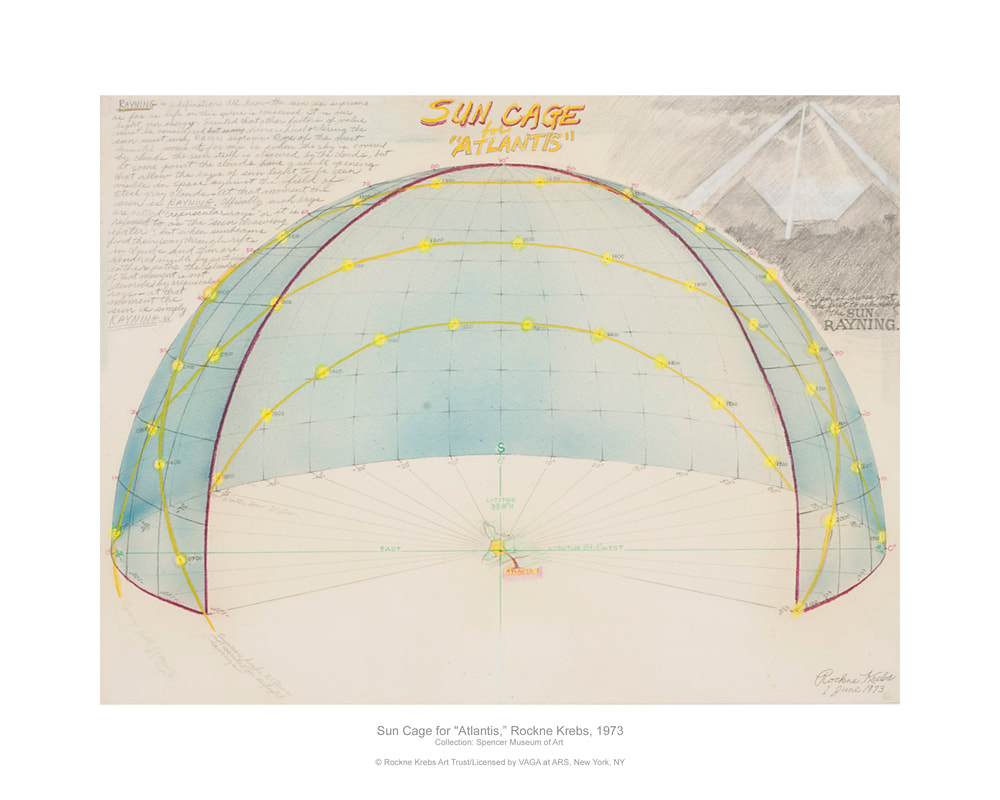
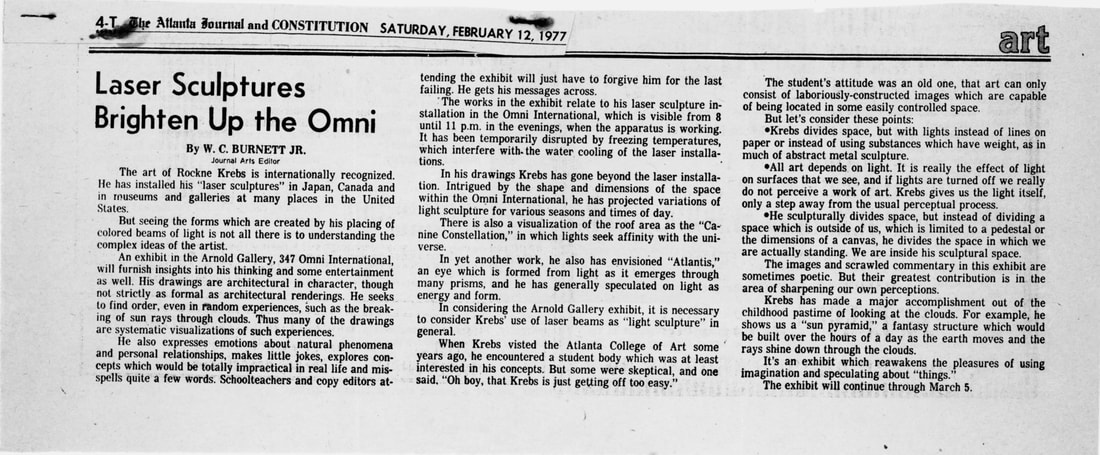

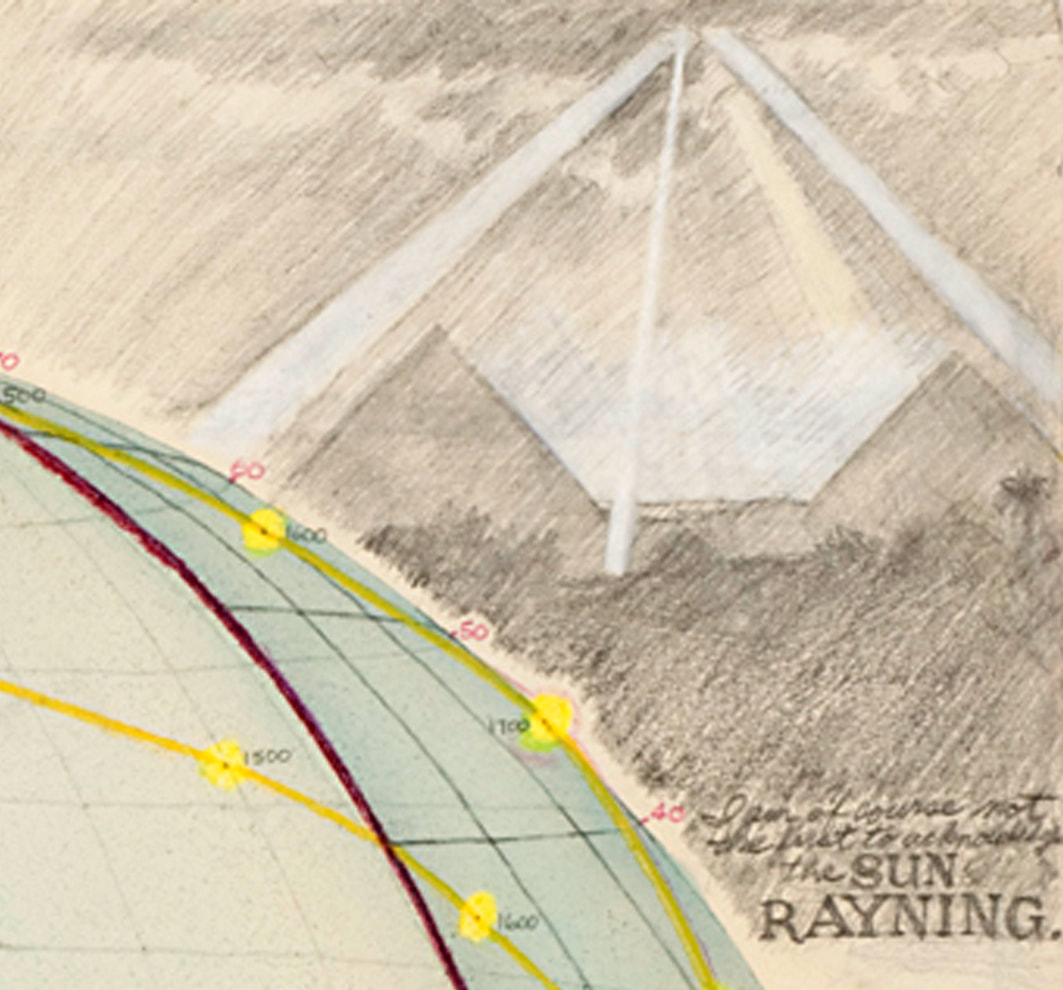




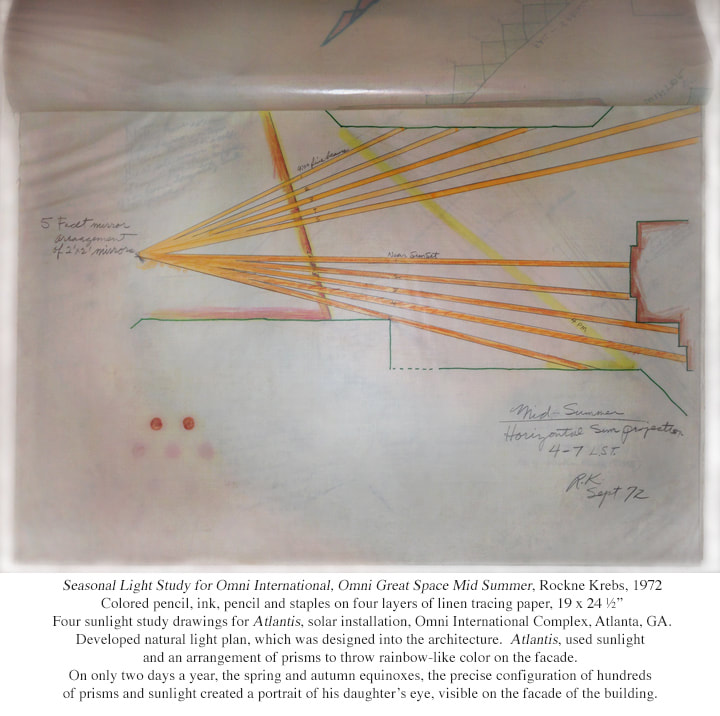

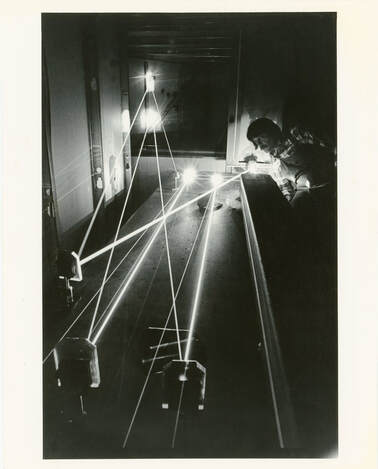


 RSS Feed
RSS Feed
